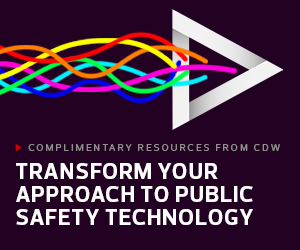Data Analysis Tools Bridge Disparate Systems
Another NICE solution, NICE Investigate, provides a way for responders to collect and manage information as an incident is unfolding. Again, they access it through a mobile app, Guy says, “but it’s not just messaging and CAD-dispatch information; it’s multimedia content like video surveillance data or citizen-provided video of what’s happening at the scene.”
NICE Investigate provides responders and investigators with other capabilities as well. Once a detective arrives at a crime scene, he or she can use the app to pull up a map of nearby businesses and residences that have registered CCTV systems with their agency, and then they can simply click on those locations to automatically request video corresponding to the time when the incident occurred.
Similarly, through another tool in the app, officers gain access to every relevant database simultaneously instead of having to search them one at a time.
“So many law enforcement agencies are hindered by the fact that data and digital evidence is spread across multiple silos,” Guy says. Whether it’s body-camera footage, crime scene photos or the recordings of 911 calls or suspect interviews, everything is typically stored in different systems that usually aren’t connected.
With NICE Investigate, all that information across all those silos is indexed and becomes searchable on one platform, Guy says. “It allows investigators to do more of what they’re trained to do, like talking to victims and interviewing witnesses and chasing down the bad guys.”
RELATED: How can technology be used to develop new approaches to public safety responses?
First Responders Distill Data for Actionable Information
Developing solutions that save agencies time is also the focus at Veritone. The company now offers several applications that police departments in particular find especially useful, says Mike Morper, vice president of product marketing for Veritone.
“They’re all rooted in using artificial intelligence to make data and information more accessible and actionable,” Morper says. Veritone Redact, for example, helps agencies quickly respond to public records requests by automatically redacting sensitive data within audio, video and image-based evidence. Veritone Illuminate, on the other hand, is used by case teams to speed up the e-discovery process ahead of prosecution.
“If you’re a detective,” Morper says, “you’ve got all this stuff you have to distill” — emails, texts, video footage, etc. — “just to find the salient things you need to move forward with a case.” It’s like looking for a needle in a haystack, he says, “when you don’t know how many needles you have, and you may not even know how many haystacks there are.”
Illuminate takes care of that job in a matter of seconds by organizing the information into logical groupings and presenting it in a way that’s easy to understand.
“For the officer,” Morper says, “it’s exactly what they want: a tool they can use to reduce clerical tasks so they can do the work of making informed decisions.”
MORE FROM STATETECH: How can public safety agencies use technology to partner with social services?









